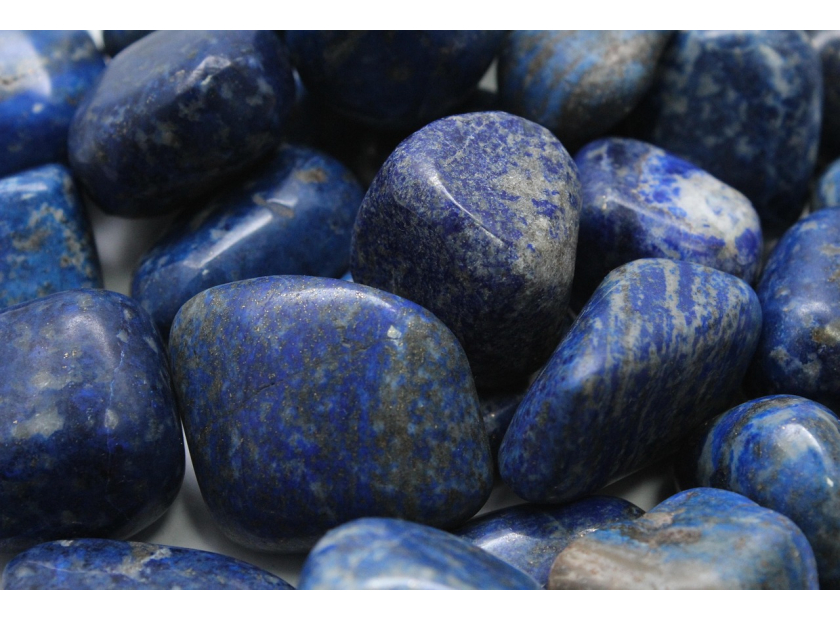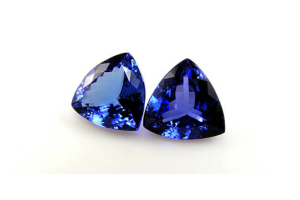USD
/
USD
/
Shipping to:
Currency:
How to Identify Genuine Lapis Lazuli: Expert Tips to Spot the Real Stone
Lapis lazuli, with its mesmerizing deep blue hue and golden flecks, has captivated humanity for millennia. From adorning ancient Egyptian jewelry to being ground into the precious ultramarine pigment of Renaissance art, this gemstone's allure is undeniable. However, the market today is full of imitations, making it essential for enthusiasts and buyers to tell the genuine from the fake. This guide will walk you through the key characteristics of authentic lapis lazuli and offer practical tips to ensure you're investing in the real deal.
Understanding Lapis Lazuli
Lapis lazuli isn't a single mineral but a composite rock primarily composed of lazurite, which gives it its signature blue color. Other minerals often include calcite (white streaks) and pyrite (golden flecks). Historically, the most renowned deposits are found in Afghanistan's Badakhshan province, with other sources in Chile and Russia.
The Prevalence of Imitations
The high value and demand for lapis lazuli have led to a rise in fake versions. Common substitutes include dyed howlite, sodalite, and even glass. These imitations can be convincing, especially to the untrained eye, making knowledge essential for accurate identification.
Distinctive Features of Genuine Lapis Lazuli
Color Variations
Authentic lapis lazuli features a rich, deep blue, sometimes with subtle variations toward violet or greenish-blue. Bright, uniformly blue stones may suggest dye or synthetic origins.
Pyrite Inclusions
One of the hallmarks of genuine lapis is the presence of metallic gold flecks, known as pyrite. These should appear naturally scattered, not overly concentrated or sparkly like glitter.
Calcite Presence
White patches or streaks of calcite are common in lapis lazuli. While some calcite adds character, too much can reduce the stone's value. Top-quality lapis shows minimal calcite and deep color.
Practical Tests for Authenticity
Acetone Test
Wipe the stone gently with a cotton swab dipped in acetone or nail polish remover. If blue color rubs off, it's likely dyed and not genuine lapis.
Temperature Check
Natural lapis feels cool to the touch, even after holding it. Plastic or resin fakes will warm up quickly in your hand.
Weight and Density
Genuine lapis has a heavier, more substantial feel than lightweight imitations made from resin or glass.
Recognizing Common Imitations
Dyed Howlite and Magnesite
These porous white stones are often dyed to mimic lapis. Look for overly bright blue tones and dye in cracks or holes.
Sodalite
Sodalite is naturally blue but lighter than lapis and typically lacks pyrite. It may also have a slight translucency that lapis doesn’t.
Glass and Resin
These materials can mimic the color but often lack texture and natural inclusions. Watch for air bubbles or unnatural sparkle.
Tips for Buying Genuine Lapis Lazuli
- Buy from Reputable Sellers: Trustworthy jewelers and gem dealers are more likely to offer real stones.
- Ask for Certification: A certificate of authenticity or origin can help confirm the stone’s legitimacy.
- Beware of Bargains: Quality lapis isn’t cheap. Suspiciously low prices are a red flag.
If you're exploring unique gemstone jewelry, check out gemstone rings for beautiful, one-of-a-kind pieces.
You can also browse non-traditional engagement rings for creative options, or explore gemstone engagement rings for settings that showcase colored stones like lapis.
When to Consult a Professional
If you're unsure about a stone's authenticity, it's worth getting an expert opinion. A certified gemologist can run advanced tests such as spectroscopy or refractive index analysis to confirm if the stone is real.
Frequently Asked Questions
What is the price range of real lapis lazuli?
It varies depending on quality, size, and source. Deep blue stones with little calcite or uniform pyrite fetch higher prices.
Can lapis lazuli change color over time?
Genuine lapis will retain its color if cared for properly. Prolonged exposure to sunlight or harsh chemicals may cause fading.
Is lapis lazuli good for daily wear?
Lapis scores 5–5.5 on the Mohs scale, so it’s softer than other gems. It’s best worn as earrings or pendants rather than rings or bracelets.
Does real lapis always have gold flecks?
Not always. Some high-quality pieces have minimal or no pyrite, while others display light sprinklings of it.








